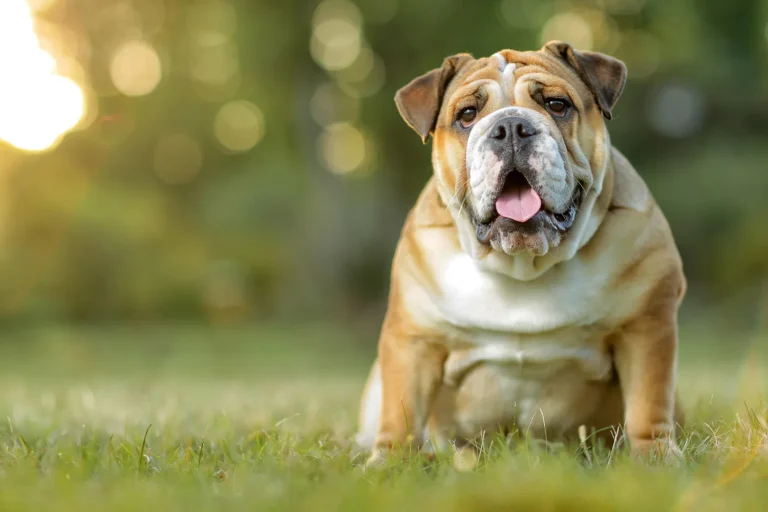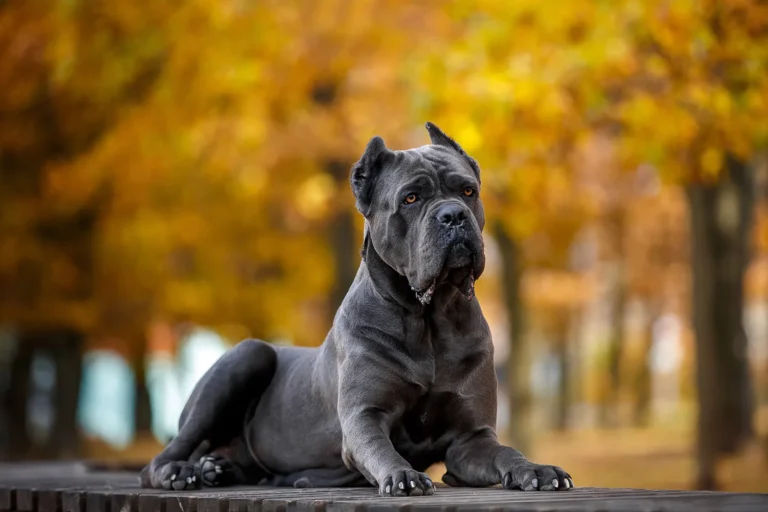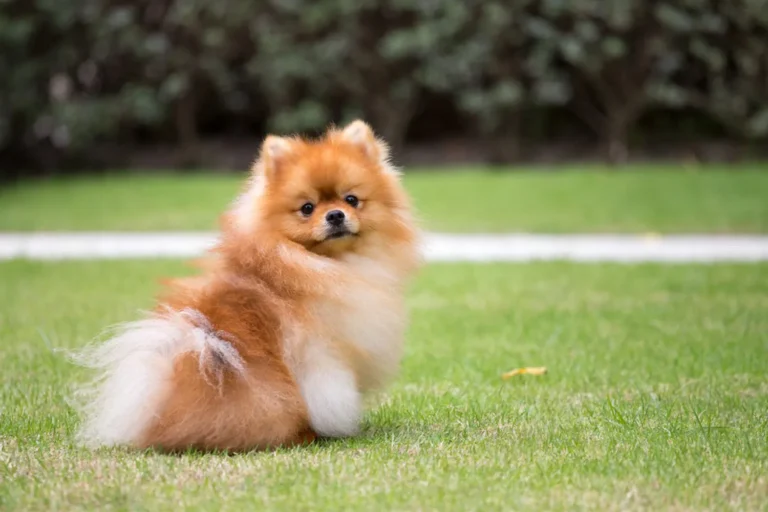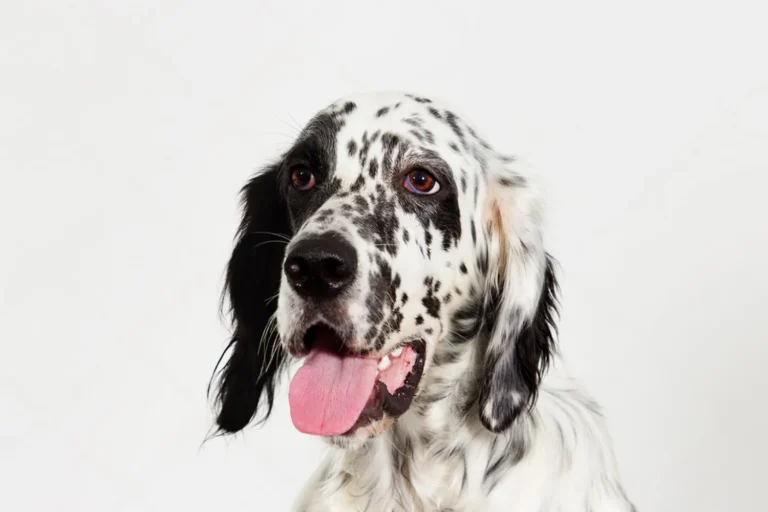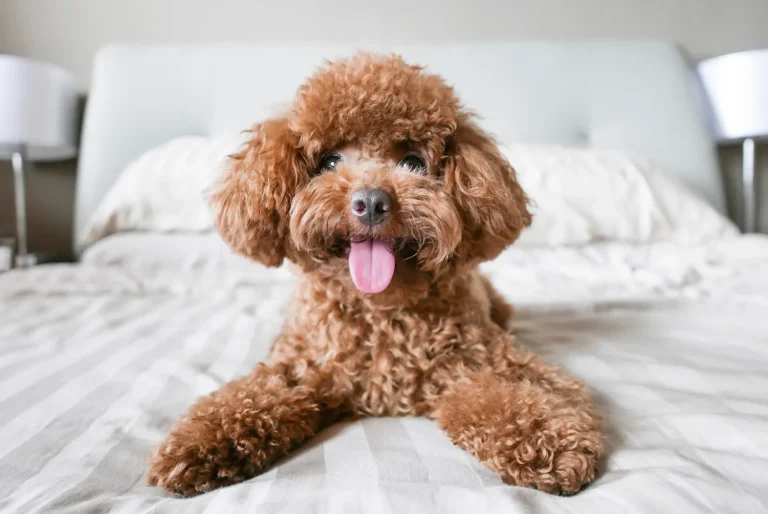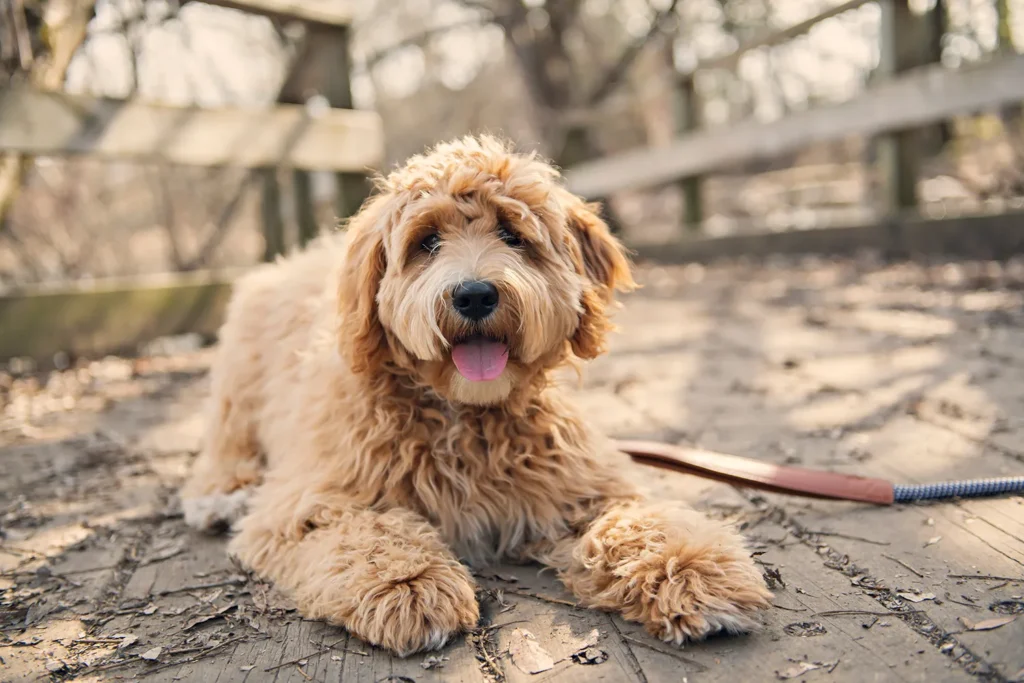
The Goldendoodle, also called the Groodle, blends a Golden Retriever’s sunny heart with a Poodle’s sharp mind. My neighbor’s Groodle learned “shake” in one afternoon and greeted every kid at the park like an old friend classic mix of brains and sweetness.
Expect an eager to please companion, playful yet gentle, with coats that can be wavy or curly and shedding that varies. Brush regularly, keep training fun, and add daily walks or fetch to keep that big doodle grin going.
What is the History and Origin of the Goldendoodle?
The Goldendoodle may look like a modern trend, but its story starts way back in 1969, when breeders first crossed Golden Retrievers with Poodles to create guide dogs for the blind. The goal was simple and smart: pair the Poodle’s low shedding, allergy friendly coat with the Golden’s famously gentle, eager to please nature. The mix worked so well that, a few decades later in the 1990s, Goldendoodles jumped from service work into the spotlight as beloved family companions.
Their rise in popularity was helped along by the Labradoodle’s success. After people saw how well a Poodle cross could do, it made perfect sense to try the same with Golden Retrievers already one of the world’s most popular dogs, especially in the United States. I still remember the first Goldendoodle I met at a Saturday farmer’s market in the early 2000s. She leaned her whole body against my legs like we were old friends, then trotted off with her owner, fur bouncing like a little cloud.
Brains are a big part of the appeal, too. Both Golden Retrievers and Poodles consistently rank among the smartest dog breeds, and Goldendoodles certainly inherit those quick learning genes. A neighbor’s doodle figured out “go find the blue ball” versus “the red one” in a weekend impressive and also a reminder that clever dogs need real mental exercise, not just a walk around the block. Puzzle toys, scent games, and short training sessions keep that busy brain happy.
The earliest Goldendoodles were crosses with Standard Poodles, producing medium to large dogs. As their popularity grew, breeders began using smaller Poodles to create mini and medium Goldendoodles for folks who preferred a more compact companion. I once dog sat a mini named Bean who could keep up on a three mile hike in the morning and then nap under my desk all afternoon a perfect balance.
While Goldendoodles aren’t recognized by the American Kennel Club as a distinct breed, they can be registered with the American Canine Hybrid Club and may compete or earn titles in sports and therapy work through other organizations. If you’re considering one, focus less on papers and more on responsible breeding: ask about health testing for hips, elbows, eyes, and heart, and meet the parents if you can. Also, despite the Poodle influence, coats can vary some shed more than others so if allergies are a concern, spend time with the specific dog before you commit.
Beyond being wonderful family dogs, Goldendoodles often shine as service and therapy partners. A friend’s doodle visited a local children’s reading program, curling up next to shy readers who suddenly found their confidence. That gentle, steady presence wrapped up in a soft, teddy bear package is exactly what has made the Goldendoodle such a modern classic.
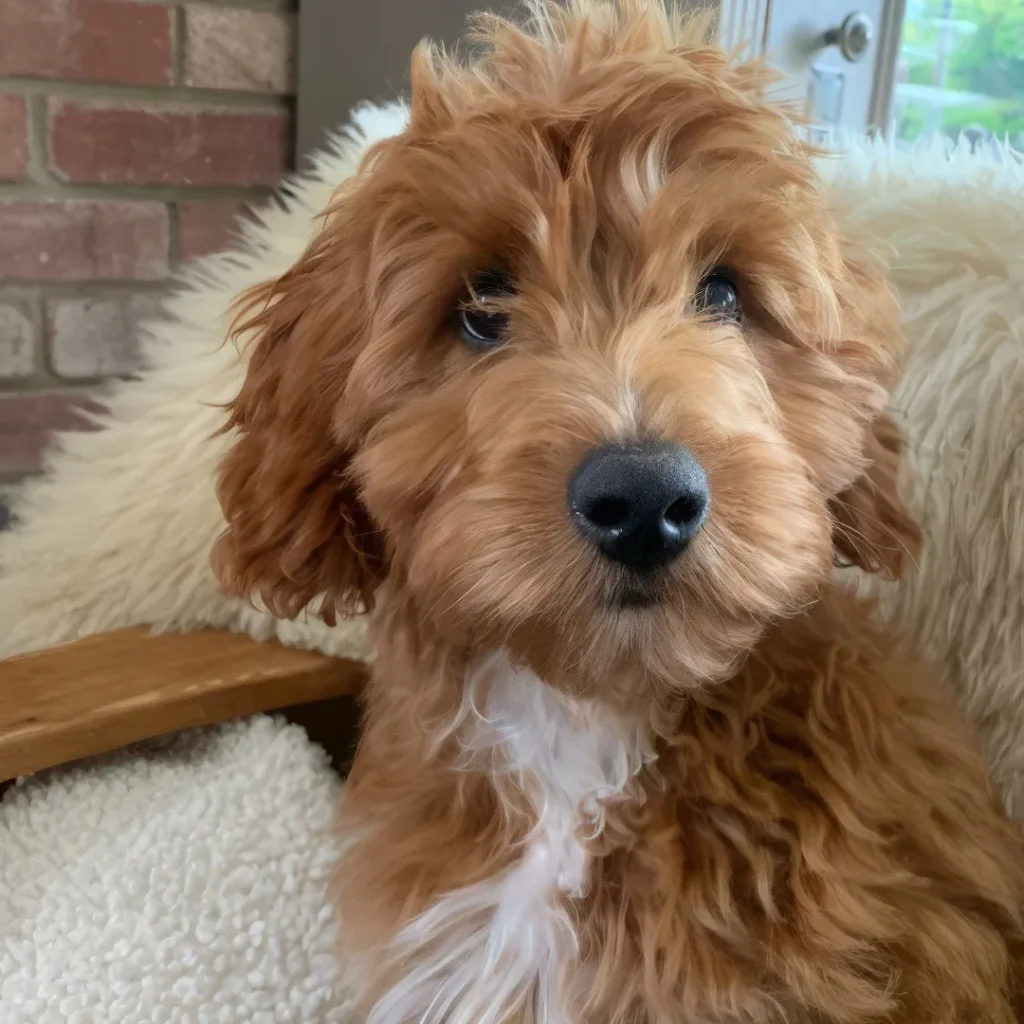
What Is a Goldendoodle?
Think of a Goldendoodle as the sunny hearted blend of a Golden Retriever and a Poodle, with a whole lot of charm tossed in. Depending on which Poodle is in the mix standard, miniature, or toy you’ll get a Large, Medium, or Miniature Goldendoodle. I’ve met all three sizes at our local park, and it’s like seeing the same cheerful spirit wearing small, medium, and large sweaters.
Temperament wise, they take after the Golden Retriever in the best ways: people oriented, loyal, and eager to be part of whatever you’re doing. Add in the Poodle’s brains and you’ve got a dog that learns fast and loves a good challenge. I like to switch between short training sessions and puzzle toys to keep them thinking; one doodle I dogsat learned “spin” and “touch” in a single afternoon simply because he was so happy to figure out the game. They’re social butterflies, too the kind of dog that trots up to say hello with a smile in their eyes.
Coat wise, many Goldendoodles inherit that poodle like, more allergy friendly fur. It tends to be low shedding, though brushing is your best friend. Plan on regular grooming to stay ahead of tangles mine loved a quick brush while we watched TV, and it made professional grooming visits so much easier. Ears can get a bit floppy and fuzzy, so a weekly check and gentle clean kept things fresh. I also learned the hard way that a damp, post swim doodle equals instant mats if you skip the brush out worth the extra five minutes, trust me.
Their looks can vary a lot, especially between first generation crosses and later generations, and depending on the type of Poodle parent. That’s part of the fun every doodle feels a little one of a kind. Generally, you’ll see a rounded skull, big oval eyes that telegraph every emotion, floppy ears, and long, often shaggy hair with a feathered tail. They’ve got a strong, athletic body and long legs longer or shorter depending on the size of the Poodle so they move with a happy, springy stride. My neighbor’s standard Goldendoodle clears fallen logs on the trail like it’s a personal mission.
If you’re choosing a Goldendoodle, think about your space and lifestyle. A Mini might be perfect for apartment living and cozy couch cuddles, while a Large will be your hiking buddy with room to stretch. Meet the parents if you can, ask about coat care, and be ready for a loving, clever companion who thrives on your company and a little daily brain work. You’ll get a best friend who’s as ready for fetch as they are for a nap at your feet.
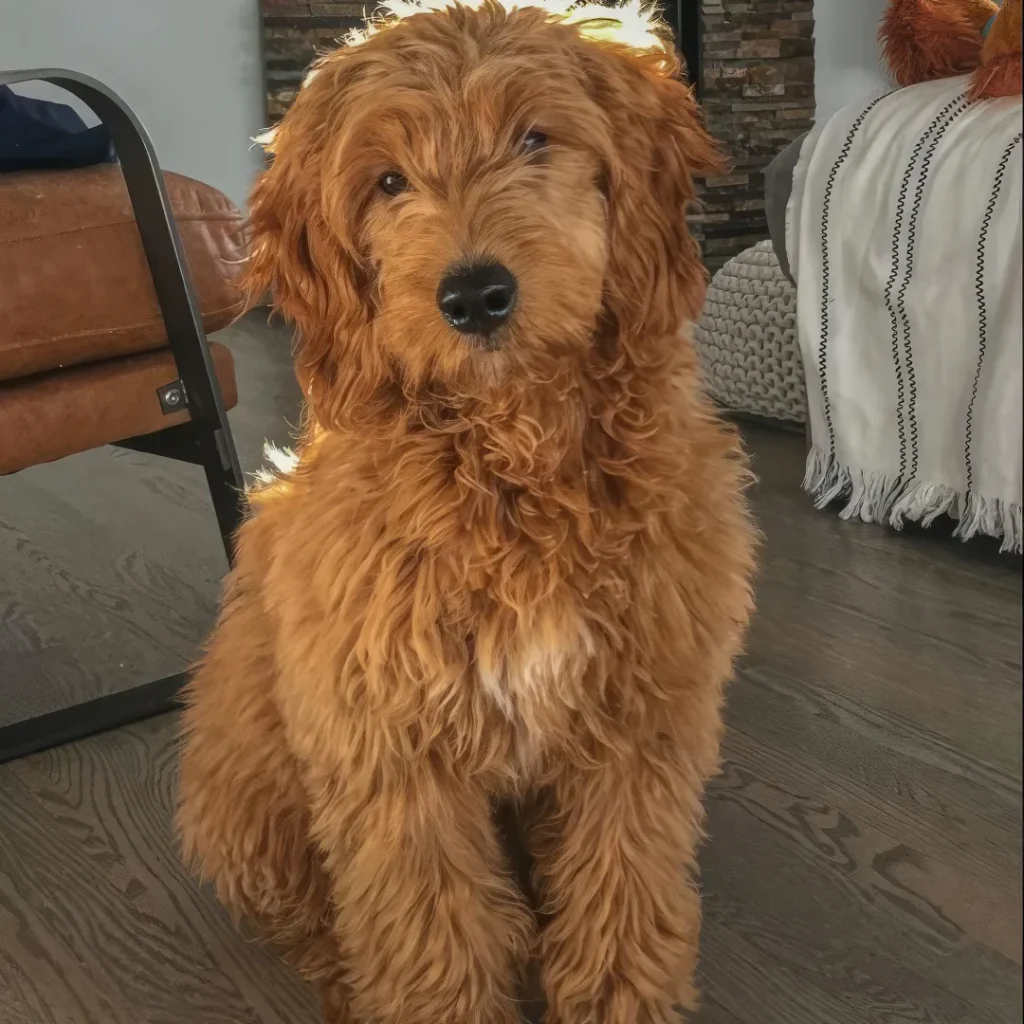
Who Is a Goldendoodle Best For?
If you’ve got an active home and a yard where a dog can really stretch their legs, a Goldendoodle will fit right in. These dogs are full of beans in the best way, and they need room to romp, chase a ball, and zoom around. Think daily walks or runs, plus a good play session in the yard. On weekends, mine loves a long hike followed by a nap that turns into a full on snuggle puddle on the couch. If you’re the kind of family that’s always up for being outdoors, you’ll have a very happy doodle at your side.
Goldendoodles are also sharp as tacks, which is wonderful until boredom strikes. A bored Goldendoodle can turn into a mischievous little tornado. I learned that the hard way when a friend’s doodle “reorganized” their shoe rack in under ten minutes. Plan for mental workouts along with the physical ones: puzzle feeders, hide and seek with treats, basic obedience refreshers, and little trick training sessions. I like to scatter a handful of kibble in the yard and let mine “find it” or pull out a snuffle mat when the weather’s lousy. After they’ve had their exercise and a brain game or two, they’re surprisingly mellow and absolutely love curling up for a cuddle.
They aren’t fans of long, lonely days. Goldendoodles do best in homes where someone is around during the daytime. If you need to leave for a couple of hours, make it after a good walk, and set them up with safe chews and a toy they can really work on. I rotate a few toys each week so they stay interesting. A mid day dog walker or a trusted neighbor can make a big difference, too. It’s also worth teaching calm alone time gradually baby steps, short absences, lots of praise when they settle.
Socially, Goldendoodles are crowd pleasers. They tend to get along well with other dogs and household pets, and they’re usually wonderfully gentle with kids. I always suggest a few short, positive introductions to new furry siblings and consistent manners around children simple cues like “leave it” and “four paws on the floor” go a long way. My neighbor’s doodle likes to lie right at the kids’ feet during story time, which pretty much sums up their loving, people focused nature.
In short, a Goldendoodle is a great match for an active family with space to play, time for daily exercise, and an interest in keeping a smart dog’s mind busy. If you love being outside, enjoy a bit of training, and have someone home most days, you’ll have a cheerful, snuggly companion who’s all in on family life.
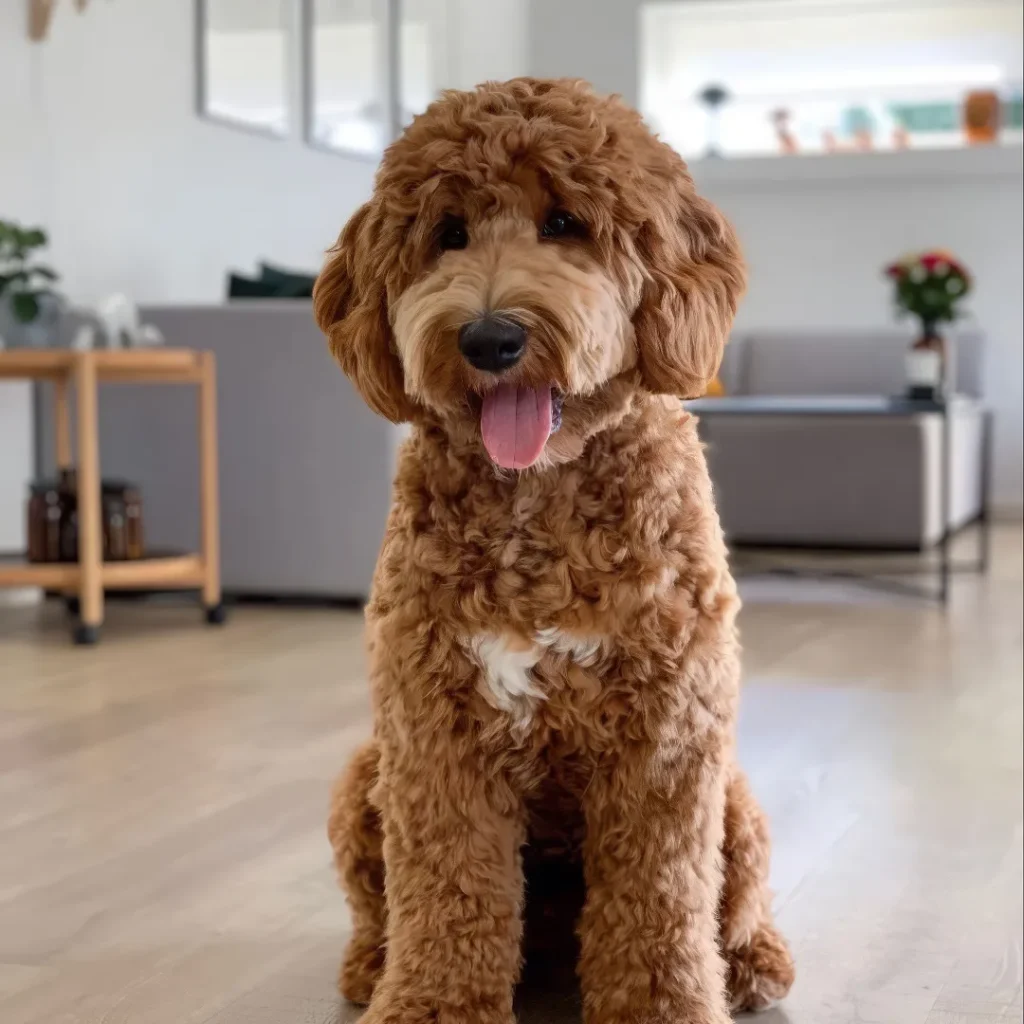
Goldendoodle Grooming & Shedding
One of the big reasons people fall in love with Goldendoodles is their minimal shedding. Their coats are often considered hypoallergenic, which can make life easier for allergy prone households. I remember dog sitting a friend’s Goldendoodle and marveling at my black jeans no fuzz! That said, low maintenance doesn’t mean no maintenance. A quick brush now and then keeps their curl or wave looking tidy and helps whisk away dead hair, knots, and tangles before they turn into mats.
For brushing, I like a simple slicker brush and a metal comb. Start behind the ears and under the collar those spots tend to tangle first then work down the legs and along the belly. A groomer once showed me the trick of holding the hair gently near the skin to avoid tugging; it makes the whole process more comfortable. I’ll sometimes do five minute “micro brushes” while we’re winding down in the evening. It doesn’t have to be a production just a quick once over to keep things smooth.
Bath time every few months is perfect for keeping the skin moisturized and the coat fresh. Use lukewarm water and a gentle, moisturizing dog shampoo, then towel dry and, if your dog tolerates it, a blow dryer on low. Mine gets the post bath zoomies, so I clear a little racetrack in the hallway first. After baths, I like to run the comb through again to prevent any tiny tangles as the coat dries.
Some hairs tend to grow longer over the eyes and between the footpads. A careful trim with rounded tip scissors keeps vision clear and paw pads comfortable. Many folks also do a quick sanitary trim to keep the rear tidy. Nails should be trimmed if they’re not naturally wearing down if you hear that click click on the floor, it’s time. Keep some styptic powder nearby just in case, or ask a groomer to handle it if you’re unsure.
Make ear checks part of your routine. Peek inside weekly for excess wax or debris, and clean gently with a vet approved ear cleaner on a cotton ball never push anything deep into the canal. If you notice redness, odor, or head shaking, call your vet.
A few treats, a calm voice, and short sessions go a long way. With occasional brushing, a bath every few months, simple trims, and ear and nail care, Goldendoodles stay comfortable, clean, and wonderfully cuddly just the way we like them.
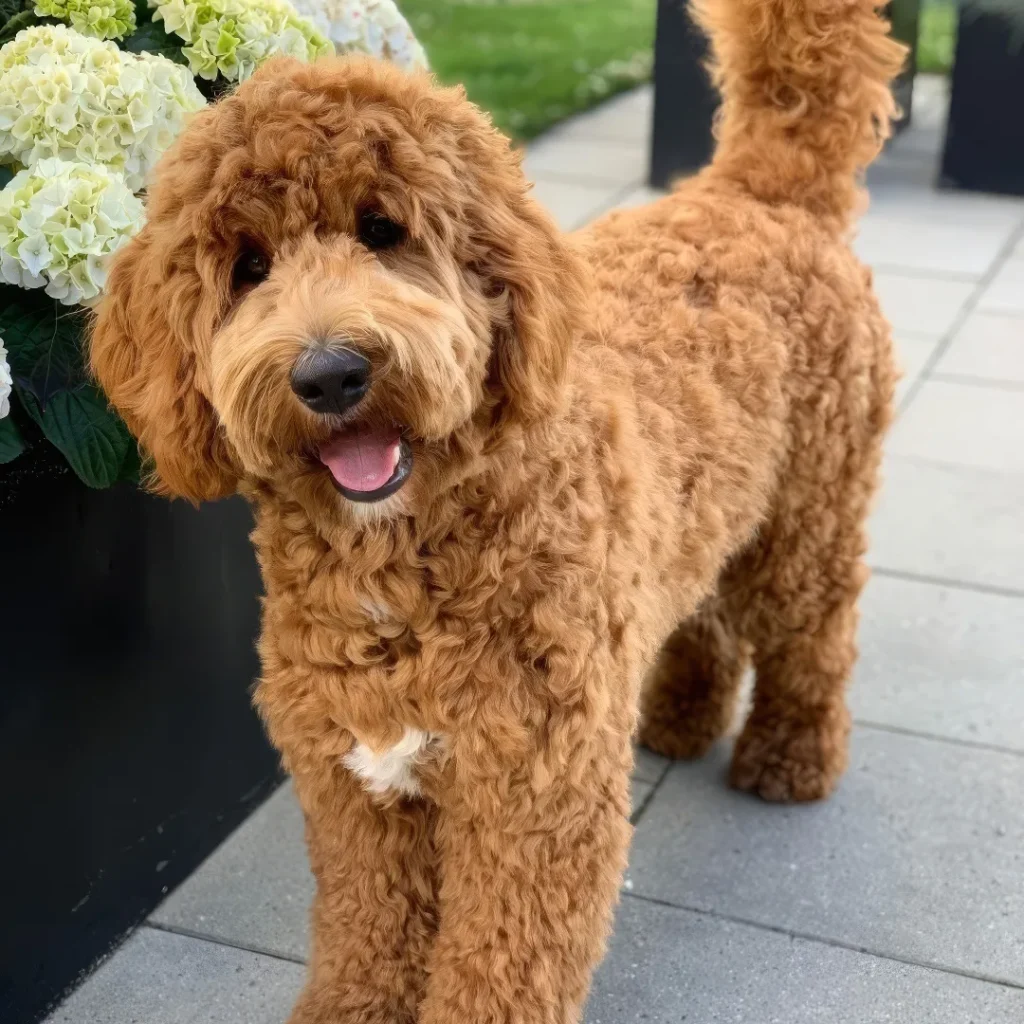
Do Goldendoodles Bark a Lot?
In my experience, adult Goldendoodles tend to be pretty chill in the bark department. They usually save their voice for when something feels off or when boredom creeps in. Think of it as an alert, not a soundtrack. My friend’s Goldendoodle gives exactly two “woofs” when the mail truck pulls up, then wanders back to his nap like, “All right, I’ve done my civic duty.” That’s the vibe with most of them: loving, social dogs who prefer wagging over warning.
Because they’re such sweethearts, they’re not exactly top tier guard dogs. If anything, they’re more likely to greet a stranger with a goofy grin than a growl. Still, many will bark to let you know if someone’s at the door or there’s an odd noise in the yard. I’ve had good luck teaching a simple “thank you” or “quiet” cue praise the first alert, then calmly ask for quiet and reward the silence. It turns their natural “Hey, check this out!” into a quick, polite heads up.
If your Goldendoodle is barking more than you’d like, it’s often a boredom thing. A tired, engaged doodle is a quiet doodle. Daily walks, sniffy explorations, puzzle toys, and short training games work wonders. I once swapped my dog’s afternoon zoomies for a 10-minute sniff and search game with treats, and the evening “I’m bored, let’s bark at the wind” routine disappeared. You can also manage triggers close a curtain facing busy sidewalks, play soft background noise, or practice doorbell desensitization. And remember, every dog is an individual: some are chatty, some barely peep. With a bit of structure and attention, most Goldendoodles settle into that sweet spot of speaking up when it matters and lounging in peaceful silence the rest of the time.

What Is the Average Weight and Height of a Goldendoodle?
Because Goldendoodles are a mixed breed, there isn’t a set “standard” size. Their final size largely depends on the Poodle parent (toy, miniature, or standard), plus a sprinkle of genetics and a dash of luck. Most Goldendoodles land around 20 to 45 kg (about 44 to 99 lb). Miniature Goldendoodles are quite a bit smaller, typically 6.8 to 13.6 kg (roughly 15 to 30 lb). For height, you’re usually looking at 33 to 66 cm at the shoulder (around 13 to 26 inches). https://en.wikipedia.org/wiki/Goldendoodle
A quick tip on measuring: stand your doodle on level ground and measure up to the top of the shoulder blade (the withers), not the head. I learned that the hard way when I thought my pup was a giant turns out I’d been measuring his fluffy ears.
If you’re trying to predict adult size, meeting the parents is your best clue. I remember visiting a litter where dad was a compact miniature Poodle and mom a smaller Golden Retriever; the puppies grew right into that “medium” sweet spot. Big paws and long, clumsy legs can hint at a larger adult, though doodles do love to surprise us. Mine hit full height around a year old and then filled out slowly until about 18 months. I also went through three harness sizes before his first birthday so if you’re shopping for gear, choose adjustable options.
Whether you end up with a couch sized cuddler or a compact adventure buddy, these ranges are a helpful guide, not a rulebook. Focus on healthy growth, regular vet check-ins, and a comfy bed that fits preferably one they won’t outgrow in a month, like I once optimistically bought.
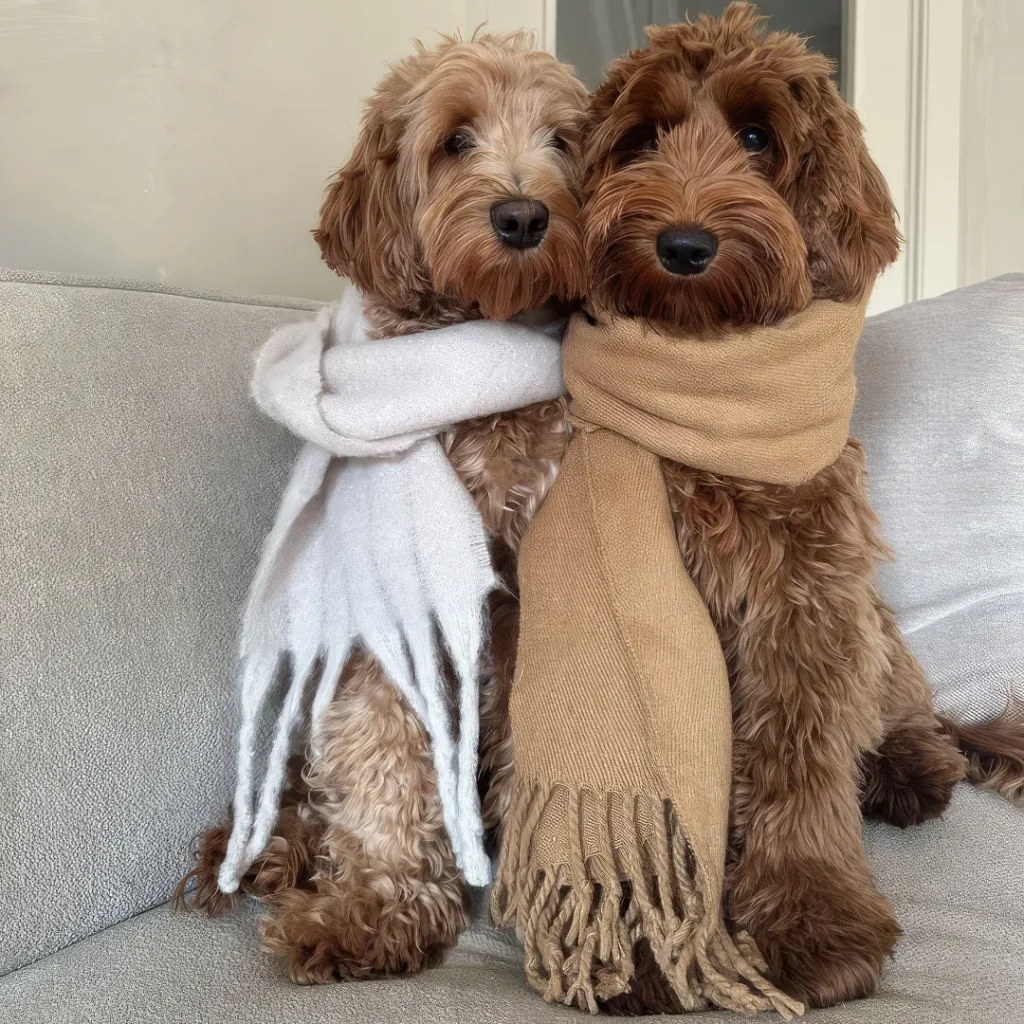
Are Goldendoodles Easy to Train?
With their quick brains and big hearts, Goldendoodles make training feel more like a fun conversation than a chore. They’re eager to figure out what you want and even more eager to earn your praise. Positive reinforcement is their sweet spot think tiny treats, cheerful yeses, and play as a reward. I’ve had great luck with clicker training too; one doodle I worked with learned “spin,” “touch,” and a calm “place” on a mat in just a weekend because we kept sessions short and upbeat.
Consistency matters with these dogs, especially during their bouncy teenage phase. Keep lessons to five or ten minutes, end on a win, and sprinkle training into everyday life ask for a sit before the door opens, a down while you tie your shoes, a brief wait before meals. They can be enthusiastic greeters, so rewarding four paws on the floor pays off fast. I always carry a pocketful of pea sized treats for surprise moments of good manners.
And yes, they’re stars in dog sports. Agility is a favorite tunnels, jumps, and weave poles let them burn energy while you build a stronger bond. A neighbor’s Goldendoodle zipped through her first tunnel like she’d been waiting her whole life for it, then snoozed the entire afternoon. If agility isn’t your thing, try rally or beginner scent games. Give them a job, keep it positive, and you’ll have a happy, trainable partner who’s all in.
How Do Goldendoodles Behave? A Look at Their Temperament and Personality
Goldendoodles can lean toward either side of their family tree some have that goofy, golden retriever “let’s be best friends” vibe, while others channel the poodle’s quick, thoughtful focus. Most end up as a lovely blend: incredibly friendly, well mannered with a little guidance, and bright enough to pick up routines fast. I once met a Goldendoodle named Maple at our Saturday park meet up who would cheerfully greet every person, then sit politely as if to say, “Okay, I’m ready for instructions now.” That’s the sweet spot with this mix social butterflies with a smart streak.
They’re people dogs through and through. Expect a loyal shadow around the house and a warm welcome for guests. As watchdogs, though? Honestly, they’re terrible more enthusiastic welcome committee than security detail. My friend’s Doodle actually brought the plumber a shoe to carry around while he worked. If you’d like to curb the “jump to say hello” habit, teach a “sit to greet” early and reward calm hellos. They’re sensitive to tone, so upbeat, positive training works like a charm.
Around children, a bit of patience goes a long way, especially with toddlers. Doodles are gentle, but they’re still bouncy by nature. I like to practice calm introductions let the dog settle, let the child offer a treat, and keep early play short and supervised. Once everyone knows the rules (soft hands, four paws on the floor), they’re fantastic family companions. My niece taught our neighbor’s Doodle to shake in one afternoon, and you would’ve thought they’d won a trophy.
They generally do well with other pets, too. Slow, thoughtful introductions help: scent swaps, baby gates, and parallel walks. I’ve had good luck letting a Doodle and a resident cat sniff through a cracked door first curiosity fades, and everybody relaxes.
Because they’re clever, keep their minds busy: short training sessions, puzzle toys, fetch, and sniffy walks. They don’t need to run a marathon, but daily exercise and a little brain work keep them content. They adore being with their people, so also practice short, positive alone time to build confidence. All in all, it’s hard to beat a Goldendoodle’s cheerful, people loving personality just don’t count on them to guard anything but the couch.

Do Goldendoodles Have Common Health Issues?
Goldendoodles are often sturdy, happy dogs, and that’s partly thanks to hybrid vigor the genetic mix that can lower the risk of some inherited diseases. When a doodle comes from a reputable breeder who health tests their parent dogs, you really stack the odds in your favor. That said, no dog is invincible. A crossbreed can still inherit issues from either side of the family tree. I like to joke that hybrid vigor is a nice safety net, not a magic shield.
If you’re puppy shopping, ask to see health clearances for both parents. Things like hip evaluations, eye exams, and DNA tests for known conditions are standard with careful breeders. I once walked away from a very cute puppy because the paperwork felt fuzzy hard choice in the moment, but my future self (and wallet) thanked me.
Here are some health concerns that can pop up in Goldendoodles, plus a few practical tips:
– Hip dysplasia: This genetic joint issue can cause stiffness or a “bunny hop” run. Keep your doodle lean, build muscle with steady walks and swimming, and avoid too much jumping on hard surfaces when they’re young. My neighbor’s doodle went from creaky to spry just by trimming a few pounds and switching playtime to grass instead of slick floors.
– Von Willebrand’s disease: A bleeding disorder affecting clotting. Responsible breeders can DNA test for it. Let your vet know before any surgery or dental work if your dog is a carrier or affected.
– Progressive retinal atrophy (PRA): A degenerative eye disease that can lead to vision loss. Annual eye checks with a veterinary ophthalmologist are smart. If night vision starts fading, add night lights and keep furniture in the same place dogs adapt surprisingly well.
– Megaesophagus: This affects the esophagus and can cause regurgitation (often right after eating). Your vet can guide feeding strategies, like small meals and elevated bowls. One friend’s doodle did great once meals were broken into smaller portions and served from a raised stand.
– Cancer: Like most breeds, they can be at risk as they age. Do monthly nose to tail checks for lumps, skin changes, or unexplained weight loss, and keep up with regular vet visits.
– Ear infections: Floppy, furry ears trap moisture. After swims or baths, gently dry the ear flaps and do a quick sniff check. Clean weekly with a vet approved solution if your dog is prone to gunk. Skip cotton swabs fingers and gauze are safer.
– Skin allergies: Watch for itching, paw licking, or red skin. Rinse or wipe paws after walks, use a gentle shampoo, and talk to your vet about diet trials or supplements. A pal’s doodle went from scratchy to comfy after a simple diet change and a targeted allergy plan.
– Eye problems (like cataracts): Cloudy lenses can appear with age. Your vet can monitor and discuss treatment options if vision is affected.
Big picture advice: choose a breeder who screens their dogs, keep your doodle fit, groom those ears, and don’t skip routine vet care. I also like having pet insurance for peace of mind because doodles are experts at surprising us in every way. Most Goldendoodles I know are bouncy, bright, and healthy well into their senior years; a little preventative care helps them stay that way.
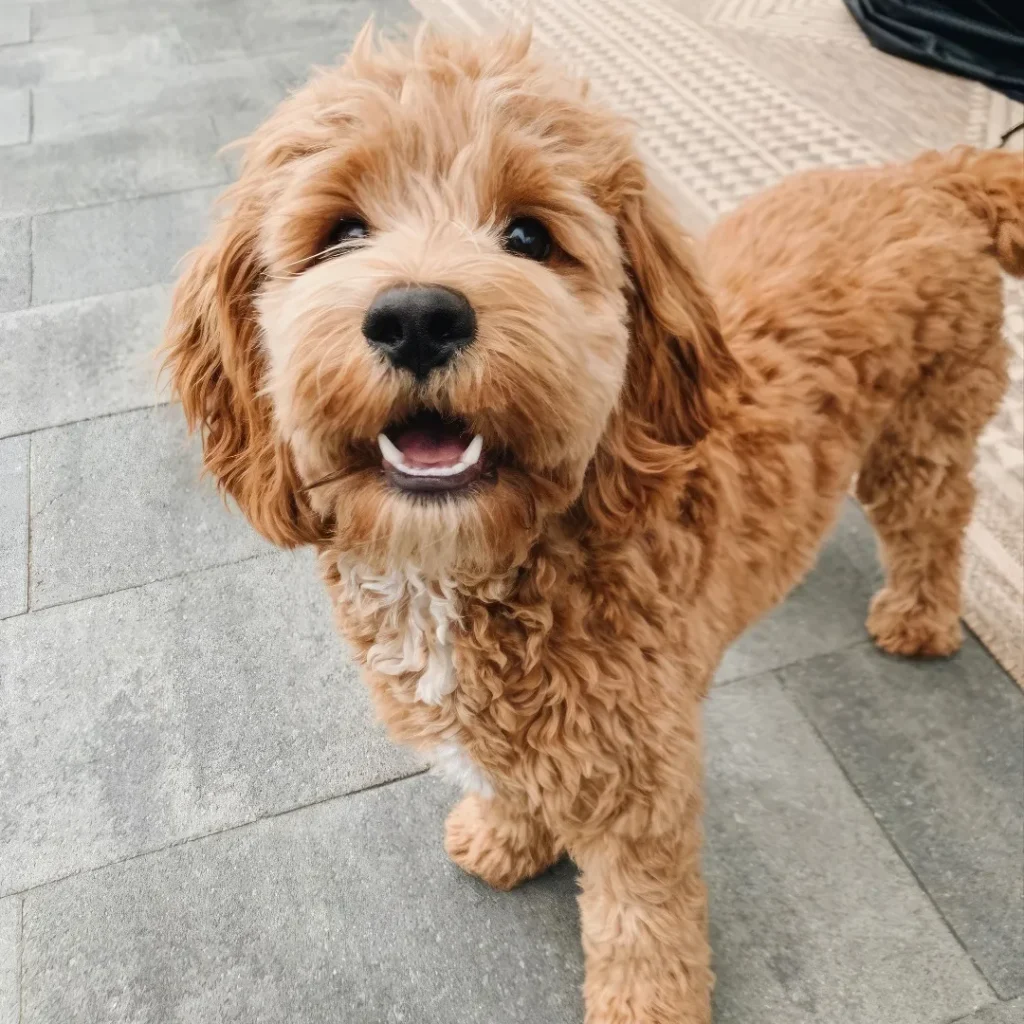
How Long Do Goldendoodles Live?
Most Goldendoodles live around 10 to 15 years on average, which gives you a wonderful stretch of time for muddy adventures, couch snuggles, and a million goofy photos. Smaller Goldendoodles often land on the longer end of that range, while larger ones may be closer to the middle. I’ve known a petite doodle who happily celebrated her 16th birthday with a peanut butter pupcake, and my neighbor’s big, gentle boy still loved slow sunrise walks well into his twelfth year.
A lot comes down to good habits and a bit of luck. Regular vet checkups, a balanced diet, and keeping your doodle at a healthy weight make a huge difference extra pounds are tough on their joints. I brush teeth a few times a week (okay, we aim for it), keep an eye on those fluffy ears after swimming, and mix in low impact exercise like walks, fetch on grass, and short training sessions. Mental games matter too. Ten minutes of “find it” or practicing cues can tire them out as much as a long walk, and it keeps their mind sharp as they age.
As they reach their senior years, small adjustments help them stay comfortable. A supportive bed, non slip rugs, a ramp for the car, and a little more patience on stairs go a long way. I also like to schedule wellness bloodwork once they hit around seven or eight, just to catch things early. With consistent care and plenty of love, many Goldendoodles greet their teens with bright eyes and wagging tails making every year feel like a new chapter together.
How Much Should a Goldendoodle Eat?
Goldendoodles burn through energy like little curly coated athletes, so a solid, high protein diet is your best friend here. Whether you go with a reputable commercial food or try your hand at homemade, aim for complete and balanced meals that support those busy bodies. I like to start with the guidelines on the bag, then adjust based on my dog’s activity and body condition.
Because Goldendoodles come in different sizes, portions can vary quite a bit. As a rough starting point: a petite mini (around 20-30 pounds) may land near 1.5-2 cups per day, a medium doodle (35-50 pounds) around 2-3 cups, and a larger standard (60-75 pounds) closer to 3-4 cups, divided into two meals. Calorie counts per cup can vary by brand, so check the label. If your doodle had a big hiking day, I might bump the portion slightly; if it was a couch and cuddles day, I dial it back. I like to reassess weekly and adjust by about a quarter cup at a time. A quick at home check: you should feel ribs with light pressure and see a slight waist from above.
These dogs can be prone to skin sensitivities, so it’s often best to avoid foods with corn, dairy, soy, or wheat. There are plenty of grain free or wheat free options out there. Limited ingredient recipes can also help you pinpoint what works best. If you’re unsure which direction to go, your vet can help you choose a formula that suits your dog’s needs. If you want to try homemade, ask your vet for a recipe plan so you cover all the essentials my friend swears by her Sunday batch cooking routine, and her doodle’s coat looks like spun gold.
Treats add up fast, especially during training. I learned the hard way when my pup nailed “leave it” and accidentally gained a pound from all the rewards. Try to keep treats to about 10% of the day’s calories and subtract a little from meal portions on heavy training days. I often use a portion of their kibble as training treats to keep things balanced.
A few small habits go a long way: use a real measuring cup, split meals into morning and evening, introduce any new food slowly over a week, and consider a slow feeder if your doodle inhales dinner. And always, always keep fresh water available mine drinks like a marathon runner after a game of fetch. When in doubt, your vet’s guidance is the safest path for a happy, healthy Goldendoodle.
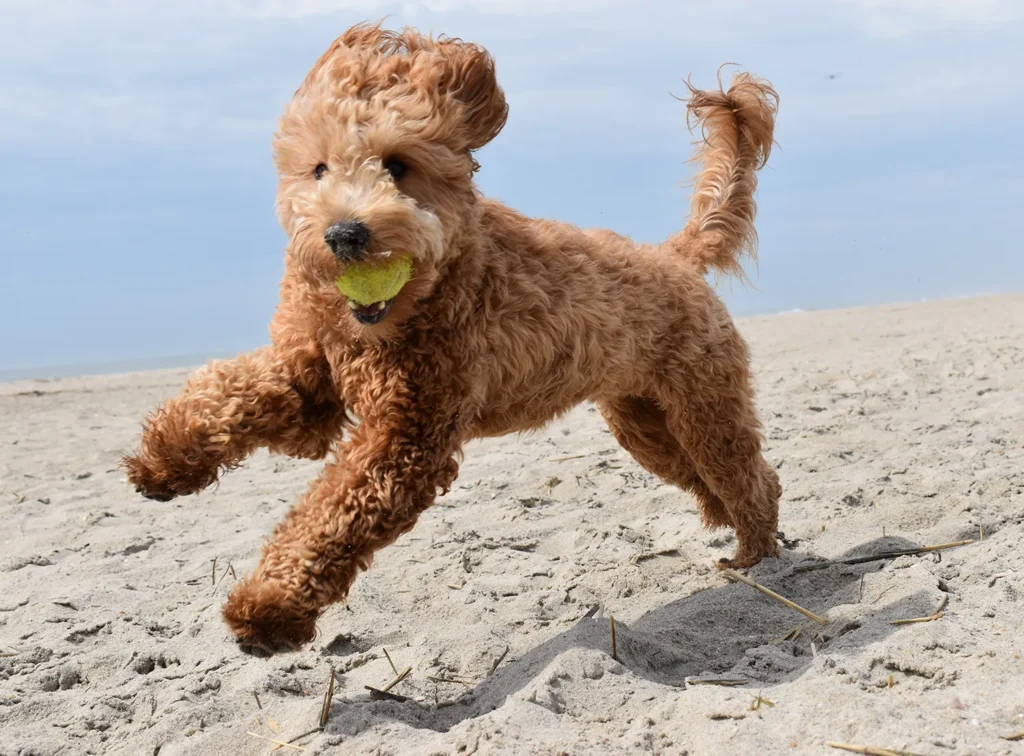
Goldendoodle FAQs
Is a Goldendoodle ideal for a first time dog owner?
Absolutely. Goldendoodles tend to be a dream for beginners thanks to their easygoing coats, loving and playful personalities, and how quickly they pick up training. They’re eager to please and usually food motivated, which makes those first “sit” and “stay” sessions feel like small miracles. I remember bringing home a bouncy Goldendoodle pup for a friend by the end of the weekend, we had a solid “sit,” a clumsy “down,” and a very enthusiastic fetch routine. They fit well into a variety of homes, too: apartments, townhouses, or a yard to romp in. Sign up for a puppy class early, keep sessions short and positive, and you’ll be off to a great start.
Do Goldendoodles suffer from separation anxiety?
Goldendoodles generally have an average need for social time. They adore their people, but they can handle being alone for a few hours without spiraling into worry. That said, no dog should be left solo for too long. I like to build up alone time slowly start with 10-15 minutes and work up. Leave a safe chew, a puzzle toy, or some gentle background noise, and keep goodbyes calm and boring. One of my favorite tricks is a comfy crate or a gated “den” so they have a cozy spot to nap. If you’ll be out longer, a midday dog walker can make all the difference.
Are Goldendoodles hypoallergenic dogs?
Yes, they’re considered hypoallergenic and often do well in homes with allergy sufferers, a trait they inherit from their Poodle side. Many folks notice far fewer sniffles and sneezes compared to heavier shedding breeds. If allergies are a big concern, meet an adult Goldendoodle first to see how you feel after some snuggle time. Keeping a regular grooming routine, washing dog bedding, and using a good vacuum also helps keep allergens low.
Will a Goldendoodle need professional grooming?
You can absolutely wash and brush your Goldendoodle at home, and many do just fine with a simple routine. Some individual dogs, especially when their coats get longer, benefit from professional grooming and a tidy trim. It really depends on whether your doodle inherited a looser, wavy coat or a tighter curl. I brush behind the ears, under the collar, and in the armpit area a few times a week those are the tangle hotspots. When the coat starts looking fluffy and long, a quick professional trim keeps things neat. Learning a basic face, feet, and sanitary trim at home between appointments is a handy skill, too.
If you’re on the fence about a Goldendoodle, just know they bring a lot of sunshine into a home. With a bit of training, reasonable alone time prep, and a simple grooming routine, they’re the kind of companion that makes everyday life feel a little brighter.
Disclaimer:
This article is for informational purposes only and doesn’t replace professional veterinary or training advice. Always consult a certified vet or dog trainer for guidance specific to your pup.
